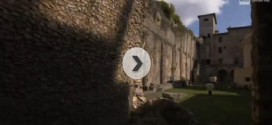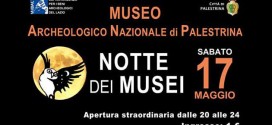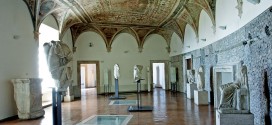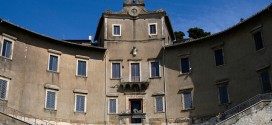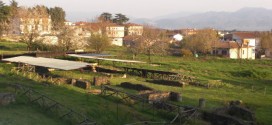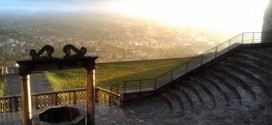The discovery of Prenestine archaeology The ancient monuments of Palestrina, and in particular the grandiose sanctuary, were known as early as the 16th and 17th centuries, as evidenced by plans, views, and reconstructive drawings by Andrea Palladio (1550), Federico Cesi (1614) and later Suares (1655), and Pietro da Cortona (c. 1650), followed by many others until the 1800s, particularly by …
Read More »admin
Documentary: Italian Journey in beauty
TV channel Rai Storia has dedicated An episode of the series ” Italian Journey in beauty ” to the Town of Palestrina . The documentary describes the Sanctuary of Fortuna , the National Archaeological Museum of Palestrina , his history and the exhibits More Important Whether you are exposed . Also shown are The Other Venues archaeological Palestrina: the Sacred …
Read More »Night of Museums
Il Museo Archeologico Nazionale di Palestrina partecipa sabato 17 maggio alla Notte europea dei Musei, con un’apertura straordinaria dalle 20 fino alle 24 (ultimo ingresso alle 23) ed ingresso al costo di 1 €. Il programma di iniziative accosterà l’arte antica e l’archeologia alla musica e al gusto, per coinvolgere il pubblico in un’esperienza culturale ricca e diversificata. Alle 20.45, …
Read More »City of Palestrina
[mapsmarker layer=”26″] Region: Lazio Province: Roma (RM) CAP: 00036 Inhabitant name: palestrinesi o prenestini Saint: Sant’Agapito martire Saint anniversary: 18 agosto House of common web site: http://www.comune.palestrina.rm.it
Read More »National Archaeological Museum of Palestrina
Museo Archeologico Nazionale di Palestrina Palazzo Barberini, v. Barberini, 22 – 00036 Palestrina (RM) tel/fax +39 06.953.8100 e-mail: sba-laz.palestrina@beniculturali.it sito web: www.archeolazio.beniculturali.it Direttore: Sandra Gatti Orari di apertura Il Museo è aperto tutti i giorni 9.00-20.00 (la biglietteria chiude alle ore 19.00). L’area archeologica del santuario della Fortuna Primigenia osserva il seguente orario: gennaio e febbraio: 9-16; marzo: 9-17; aprile: …
Read More »The National Archaeological Museum of Palestrina
The National Archaeological Museum of Palestrina, hosted inside the Colonna-Barberini Palace, was opened in 1998; the Museum set-up was based substantially on thematic criteria that took in considaration the chronological elements and source of finds. The museum itinerary takes place within succession of different themes, from the cult of Fortune, Hellenistic and Iconic sculpture to the Augustan and Imperial Age …
Read More »Barberini Palace
The old palace was built by Colonna family on the structures of semi cycle above the Sanctuary of Fortuna Primigenia around 1050, when family settled at Palestrina. The building underwent a first destruction in 1298, when Palestrina, after a siege that lasted nearly a year, was compleatly destroyed on demande of Boniface VIII, who had ordered the confiscation of family’s …
Read More »Domus and Houses
The typical Roman House, which was widely distributed (from the beginning) even in the Latin cities such as Praeneste, was called domus by the Latins. Today archaeologists indicate with this word urban single-family housing, variable-size, whose rooms are articulated around a central opend courtyard (atrium) that provides light inside the rooms, usually closed to outside for safety reasons. At the …
Read More »The Imperial Age
The story of Palestrina during the Imperial age is less known, but to judge from the inscriptions, remains of buildings and evidences of considerable artistic level, that have been preserved to the present day, it was a period of discreet prosperity, however not comparable with the splendors of the Republican Age. In the Augustan Age the monuments and archaeological finds …
Read More »The late Republican Age and new prosperity of Praeneste
At the end of the 2nd century BC a new sensitive rebirth of Praeneste was noticed, a period of great prosperity and wealth, documented mainly by impressive and monumental urban restoration of public buildings of civil and sacred character. The Prenestins in fact, like citizens of many other small centers of Latium region took advantage of Rome’s wars in the …
Read More »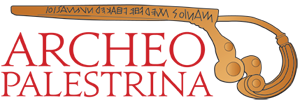 Archeopalestrina Percorso archeologico di Palestrina, l'antica Praeneste
Archeopalestrina Percorso archeologico di Palestrina, l'antica Praeneste
